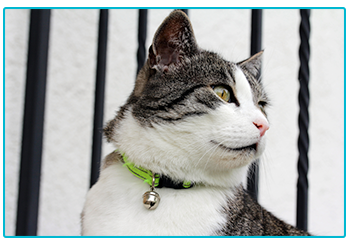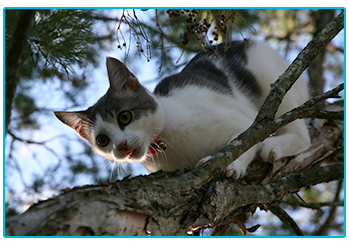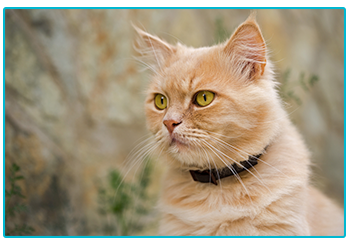There are many magical cat collars to choose from on the market. They can help your furry friend be identified if it gets lost on one of its adventures, or let it create a fashion statement. However, vets see many collar injuries each year, so they are urging owners to consider safety first when selecting one for your pet. At The Insurance Emporium, we want your cat to be happy and healthy, so our pet health expert has provided the following advice on cat collars.

Why get your paws on a collar?
The main reason to get a collar for your cat is so that they can be easily identified if you attach a tag with your name and address – although it’s better to get your kitty added to the National Pet Register or microchipped! However, there are several more uses for collars. As the nights are longer at the moment, putting a reflective collar on your feline can also help them be seen – especially if you have a black cat. For cats with that annoying habit of bringing birds and mice home, it might be useful to put a bell on their collars. If you are concerned about fleas, you can get a flea collar to control these pests! Some collars are even getting quite hi-tech and can be fitted with tags that can activate cat flaps!

Injuries to watch out for
As useful as collars can be, unfortunately they can sometime lead to injuries. If a collar rubs your cat’s neck, it can cause hair loss. Also, longstanding collar use can suppress your cat’s hair growth permanently. During grooming, or when trying to remove a collar, cats can trap their jaw. They could also catch their collars on things like fences and branches, which can cause severe injuries and strangulation. One serious collar injury that is commonly seen by vets is where cats get their front leg caught in their collar, which can cause a large, deep wound in the armpit region. This is an injury that can be very difficult to treat.

Avoiding collar-related catastrophes
If you are concerned that your cat might get an injury from wearing a collar, there are things you can do to avoid this. Only use a collar when you need it and make sure it’s a good quality safety collar rather than just a pretty one for fashion. Make sure that the collar fits properly: you should be able to put two fingers underneath it. Check the fit of the collar on a regular basis, particularly if your cat is still growing. Rather than getting a collar with elastic inserts, choose a collar with a quick release clasp. Elastic inserts were previously introduced as a safety feature but they often fail to snap and a cat can get their front leg trapped in one of these.
While collars generally do offer a range of benefits for cats that wear them, occasionally felines can get caught out with an injury. If your cat is unfortunate enough to get an injury as a result of wearing a collar, or if you have any concerns, it’s worth contacting your vet as soon as possible. It’s always best to make sure your feline is feeling fine!
All content provided on this blog is for informational purposes only. We make no representations as to the accuracy or completeness of any information on this site or found by following any link on this site. We will not be liable for any errors or omissions in this information nor for the availability of this information. We will not be liable for any loss, injury or damage arising from the display or use of this information. This policy is subject to change at any time.


